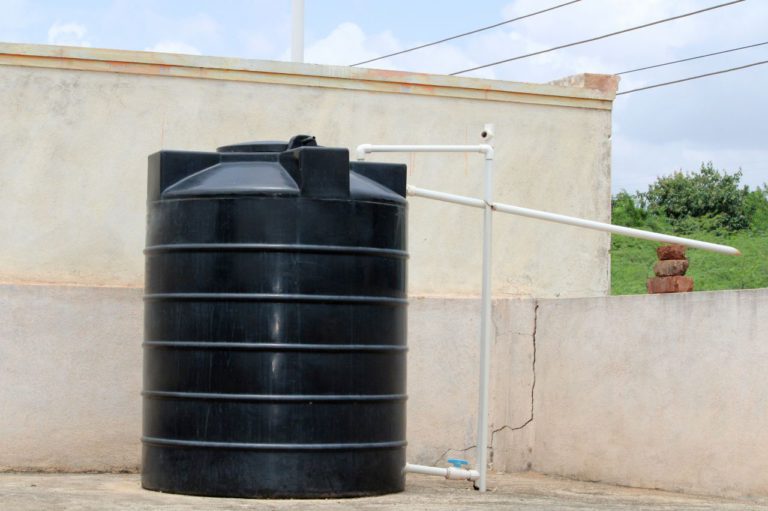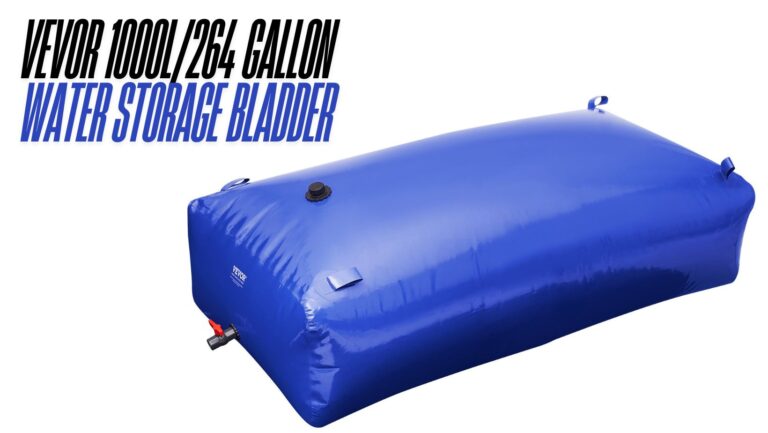Why Underground Water Tanks Are a Smart Investment
Discover the benefits of installing an underground water tank to make your home more sustainable and eco-friendly. Collect and store rainwater for future use, reduce reliance on the main water supply, lower water bills, and ensure a reliable water source during droughts or restrictions. Transform your home into an eco-friendly oasis with this complete guide.
Key Takeaways:
- Installing an underground water tank is an eco-friendly way to collect and store rainwater, reducing reliance on the main water supply and conserving water resources.
- Underground water tanks prevent stormwater runoff, protecting local waterways and ecosystems.
- There are cost-saving benefits, including reduced water bills, potential incentives, and savings on landscaping expenses.
- Types of tanks include concrete, polyethylene, and fiberglass, each with its own advantages.
Environmental Benefits of Underground Water Tanks
Installing an underground water tank is an excellent way to contribute to a more sustainable environment. One of the key environmental benefits is the ability to collect and store rainwater. Rainwater harvesting helps conserve water resources by reducing the demand for water from the main supply. Instead of relying solely on treated water from the municipal supply, you can use the rainwater you collect for various purposes such as watering your garden, washing your car, or even flushing toilets.
Furthermore, by reducing your reliance on the main water supply, you can help alleviate the pressure on local water sources, especially during times of drought. With climate change leading to more frequent and severe droughts in many regions, having an underground water tank becomes even more crucial. During droughts or water restrictions, you can still access water for essential needs, ensuring that your household does not suffer from water scarcity.
Not only does an underground water tank provide you with a sustainable water source, but it also helps prevent stormwater runoff. When it rains, water runs off hard surfaces such as roofs and pavements, carrying pollutants into rivers and streams. By capturing rainwater in your underground tank, you can reduce the amount of stormwater runoff, thus protecting local waterways and ecosystems.
Cost-Saving Benefits of Underground Water Tanks
In addition to the environmental advantages, installing an underground water tank can lead to significant cost savings. One of the primary ways it helps save money is by reducing your water bills. By using the stored rainwater for non-potable purposes, you can lower your reliance on treated water from the municipal supply. This means that you will be charged less for the water you consume, resulting in noticeable savings over time.
Moreover, some regions offer incentives and rebates for installing underground water tanks. These incentives can help offset the initial installation costs and make the investment even more financially attractive. Depending on where you live, you may be eligible for government grants or tax credits that can further reduce the overall expenses.
Another cost-saving benefit of underground water tanks is the potential reduction in landscaping expenses. The stored rainwater can be used to irrigate your garden or lawn, eliminating the need for additional water usage. This not only saves money but also conserves water resources, making it a win-win situation for both your wallet and the environment.
Health Benefits of Using Underground Water Tanks
Aside from the environmental and cost-saving benefits, underground water tanks can also provide health advantages. When you collect rainwater in your tank, you have control over the quality of the water you use. Unlike the treated water from the municipal supply, rainwater is free from chemicals such as chlorine or fluoride. This makes it ideal for various applications, such as watering plants or washing clothes, where the absence of chemicals is desirable.
Furthermore, rainwater is naturally soft compared to hard water from the mains supply. This can have several benefits for your health, such as reducing the risk of skin irritations or dryness. Soft water is also gentler on your clothes and household appliances, potentially extending their lifespan and reducing maintenance costs.
It is important to note that while rainwater is generally safe for non-potable uses, it may not be suitable for drinking without proper treatment. If you plan to use the collected rainwater for drinking purposes, it is recommended to invest in a filtration system to ensure its safety and quality.
Factors to Consider Before Installing an Underground Water Tank
Before you decide to install an underground water tank, there are several factors you should consider. Firstly, you need to assess the available space on your property. Underground water tanks require adequate space for installation, including access points for maintenance purposes. Additionally, you should consider the depth and size of the tank based on your water usage needs and the rainfall patterns in your region.
Another important factor to consider is the quality of the soil on your property. The soil should be suitable for excavation and capable of supporting the weight of the tank. If your soil is unsuitable, additional measures may be required, such as reinforcement or choosing an alternative location.
It is also essential to check local regulations and obtain any necessary permits before installing an underground water tank. Different regions may have specific requirements regarding tank installation, so it is crucial to ensure compliance with local laws to avoid any legal issues.
Types of Underground Water Tanks
There are various types of underground water tanks available, each with its own advantages and considerations. The most common types include concrete tanks, polyethylene tanks, and fiberglass tanks.
Concrete tanks are durable and can withstand the test of time. They have a long lifespan and can handle high water pressure. However, they are relatively expensive to install and require professional expertise for proper installation.
Polyethylene tanks are lightweight and easy to install. They are also resistant to corrosion and can be more cost-effective compared to concrete tanks. However, they may not be as durable and may require additional reinforcement depending on the soil conditions.
Fiberglass tanks are another option, offering excellent durability and resistance to corrosion. They are lightweight and relatively easy to install. However, they can be more expensive than other options and may require professional installation.
Installation Process for Underground Water Tanks
The installation process for an underground water tank requires careful planning and professional assistance. Here is a general overview of the installation steps:
- Site Preparation: The area where the tank will be installed needs to be excavated and leveled. Any necessary reinforcement or modifications to the soil should be done at this stage.
- Tank Delivery: The tank will be delivered to your property and carefully lowered into the excavated area using specialized equipment. It is essential to ensure that the tank is properly positioned and aligned.
- Plumbing and Connections: The necessary plumbing and connections should be installed to allow water to flow into and out of the tank. This may include connecting downpipes from the roof to the tank and installing an overflow system.
- Backfilling and Compaction: Once the tank is in place, the excavated area around it needs to be backfilled and compacted to provide stability and support. Proper compaction is crucial to prevent settling or damage to the tank.
- Finishing Touches: The final steps include landscaping the area around the tank and ensuring that access points for maintenance are easily accessible. It is important to consider safety measures, such as installing a secure cover for the tank to prevent accidents.
Maintenance and Care for Underground Water Tanks
To ensure the longevity and optimal performance of your underground water tank, regular maintenance and care are necessary. Here are some essential maintenance tasks:
- Regular Inspections: Periodically inspect the tank for any signs of damage, leaks, or blockages. Check the plumbing connections and ensure that the tank is functioning properly.
- Cleaning: Clean the tank at least once a year to remove any accumulated debris or sediment. This can be done by draining the tank and scrubbing the interior surfaces.
- Filter Maintenance: If you have a filtration system, make sure to clean or replace the filters as recommended by the manufacturer. This will ensure that the collected rainwater remains safe and free from contaminants.
- Storm Preparation: Before the rainy season or severe weather events, ensure that the tank and its components are secure and properly maintained. Clear any debris or obstructions that may affect the tank’s functionality.
- Professional Servicing: Consider scheduling professional servicing of your underground water tank to ensure that all components are working correctly and to address any potential issues before they escalate.
Frequently Asked Questions about Underground Water Tanks
1. Are underground water tanks suitable for all types of properties?
Underground water tanks can be installed on various types of properties, including residential, commercial, and industrial. However, it is important to consider the available space, soil conditions, and local regulations before installation.
2. Can I drink the rainwater collected in an underground water tank?
While rainwater is generally safe for non-potable uses, it may not be suitable for drinking without proper treatment. If you plan to use the collected rainwater for drinking purposes, it is recommended to invest in a filtration system to ensure its safety and quality.
3. How much can I save on my water bills by using an underground water tank?
The amount of money you can save on your water bills depends on various factors, including your water usage habits, the size of the tank, and the rainfall patterns in your region. However, many homeowners report significant savings ranging from 30% to 50% after installing an underground water tank.
4. Do underground water tanks require a lot of maintenance?
While underground water tanks do require regular maintenance, the tasks involved are relatively straightforward. Regular inspections, cleaning, and filter maintenance are essential to ensure optimal performance. Professional servicing may be necessary periodically to address any potential issues.
Final Thoughts
Installing an underground water tank offers numerous benefits for both the environment and homeowners. By collecting and storing rainwater, you can reduce your reliance on the main water supply, conserve water resources, and lower your water bills. Additionally, underground water tanks provide a reliable source of water during droughts or water restrictions, ensuring that you never run out of this precious resource. With the ability to contribute to a more sustainable future, save money, and enjoy the health benefits of using rainwater, installing an underground water tank is a smart investment for any eco-conscious homeowner. Take the first step towards a more sustainable lifestyle and transform your home into an eco-friendly oasis with an underground water tank.







